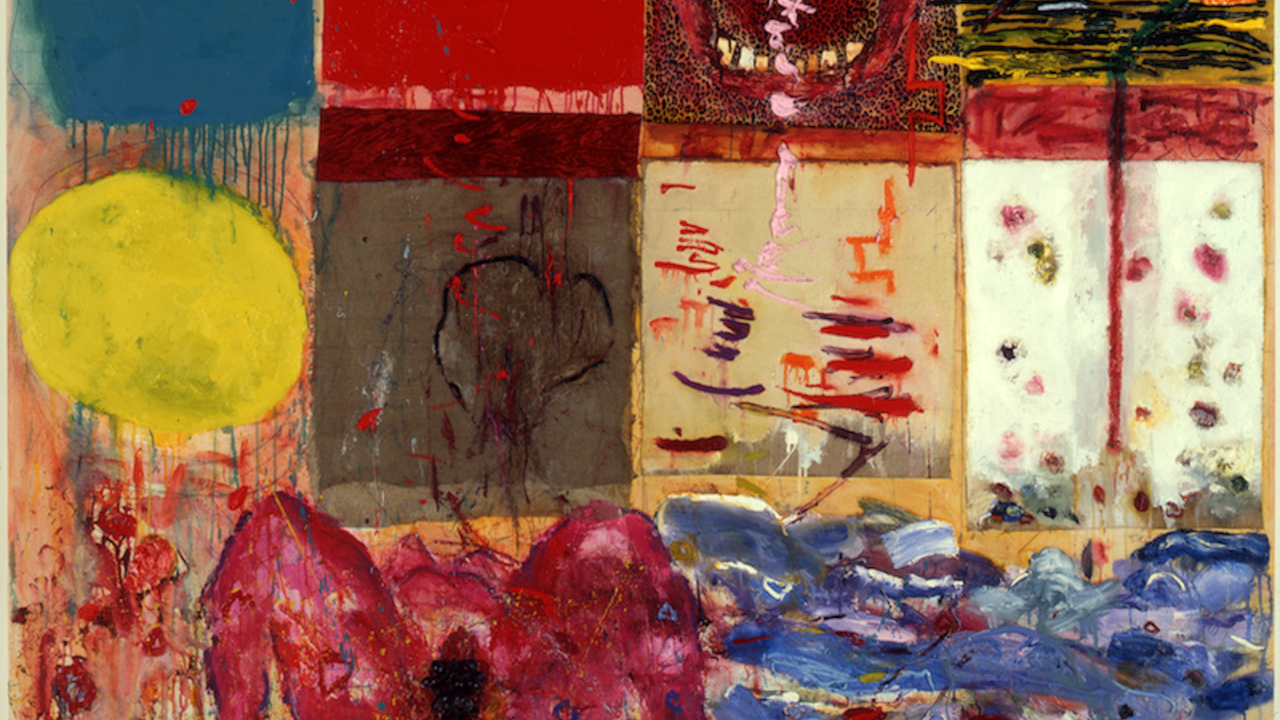The Feminine Mystique: Artist Mai-Thu Perret’s Mythical Feminist Commune in the New Mexican Desert
In Perret’s two crafts-filled shows at MAMCO, Geneva, and Spike Island, Birstol, she draws from the fabular women of New Ponderosa
In Perret’s two crafts-filled shows at MAMCO, Geneva, and Spike Island, Birstol, she draws from the fabular women of New Ponderosa

Since 1999, the Swiss artist Mai-Thu Perret has presented work, through her project The Crystal Frontier (1999–ongoing), as the products of a fictional utopian feminist commune in the New Mexican desert. Over the years, Perret said in a 2016 interview, ‘the artworks have gained their own independence from the story, but it’s something I always come back to’. Her retrospective in Geneva, complemented by a show in Bristol, provides a full view of her evolving approach.
One entry point at MAMCO is a colourful room of wall texts extracted from The Crystal Frontier, contextualising objects as evidence of the systems and rituals whereby the women of New Ponderosa aim to construct their own Eden ‘through a return to nature and craft’. That reflects an opposition to mechanical production as representing a patriarchal diminution of the role of women, and leads to ceramics and tapestry being situated as feminist, rather than domestic, arts. Moreover, the production of such items has narrative logic: their sale is an important source of communal income, and their making-by-all rejects the division of labour. That fits with how Perret herself turns, though her primary training was in literature, to sculpture, ceramics, wickerwork, tapestry, painting and film.

The objects made directly ‘as from’ the outsider community fill two rooms at MAMCO. Their seductive textures, colours and repurposing of modernist aesthetics make them easy to enjoy for themselves. Yet they need the backstory for substance and aura. Plenty of artists draw upon imagined worlds, but Perret’s differs from the norm in that we have no straightforward description of New Ponderosa. We are restricted to such fragments as diary entries, correspondence, instructions and an essay in the Commune’s Newsletter – and crafts which are peripheral to the politics. This utopia is more an ambience than a place, allowing the work to breathe, free of any overt agenda.
Further rooms represent four other extensive multi-media projects – from film to tapestry – such as ‘Apocalyptic Ballet’ (2006), ‘The Evening of the Book’ (2007) and ‘Feminaire’ (2017). ‘Feminaire’ features six mannequins on a raised stage, inspired by the Kurdish women fighters who have resisted the Syrians since 2011. Is this the community’s radical wing? Perret keeps her figures – as in the earlier projects – remote, their faces inexpressive or hidden. The soldiers face abstract banners, another Perret motif, suggesting political symbols but again without spelling them out.

‘Garden of Nothingness’ (2018) is an installation made for MAMCO. In the only room which actually faces the outside world, the windows are blocked off by a black fence-like construction. That sets up a backlighting effect which Perret associates with the spiritual awakening of Buddhism. The space so enclosed contains bronzes, hung head-high, of body parts. The lungs have been converted to a bell, with clappers visible. We seem to be in a Zen garden, awaiting the chime of ritualistic instruments which will bring body and mind together.
Like those recent projects, ‘The Blazing World’ isn’t attributed to The Crystal Frontier, but is consistent with it. A recurring character of Perret’s is the witch, which we can take in the context of her overall practice as a representative figure of female empowerment: for women to assert themselves separately from social expectations has been to risk exclusion. Perret sets out not a narrative but a stage set into which we can read the potential for stories to come – including a performance at the end of the exhibition. Against a silver backdrop, we hear an incantatory recording written and performed by Tamara Barnett-Herrin. A banner – Mirror Logic (2019) – uses circles to suggest the moon is influential. Three simple but monumental objects (Superpotent, 2019) which can be moved round on wheels provide alternative settings. One is the base of a tree, evoking a potentially romantic view of witches as outcasts from town, living off roots and berries. This stage set is populated only by ceramics. A Magnetiser (2019) is a gingerbread house – reminding us that the clay has been baked – and Abnormally Vivid (2019) a basket of part-bitten apples: the wicked witches of Grimms’ fairy tales are summoned. With an unbounded force (2019) is a wall line of animal masks, cast from the plastic versions in a German carnival. What might we be possessed by or turned into?

Taken together, the last few years of Perret’s production represent an impressive expansion of the concerns of The Crystal World, maintaining a mutually supportive balance between her individual works, particular exhibitions and overall practice. Use-value, cult-value and art-value jostle for primacy, the works’ status complicated by the hints of a wider stories. There is scope to push further. For example, the community is all-female not through antagonism against men, but because they wish to learn how to be perfectly self-sufficient before including them. Should they reach that point, the scenario could take another interesting turn.
'Mai-Thu Perret' was on view at MAMCO Geneva from 10 October 2018 until 3 February 2019.
Main image: 'Mai-Thu Perret', 2018, installation view. Courtesy: the artist and MAMCO, Geneva; photograph: Annika Wetter
























